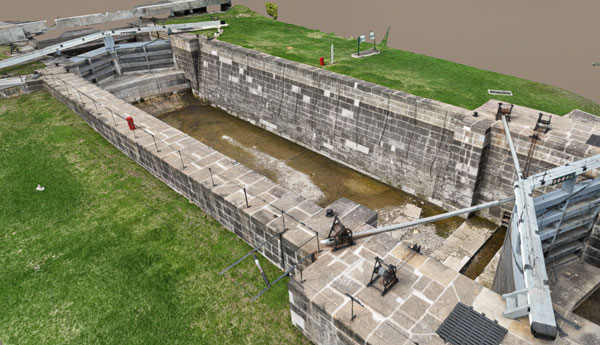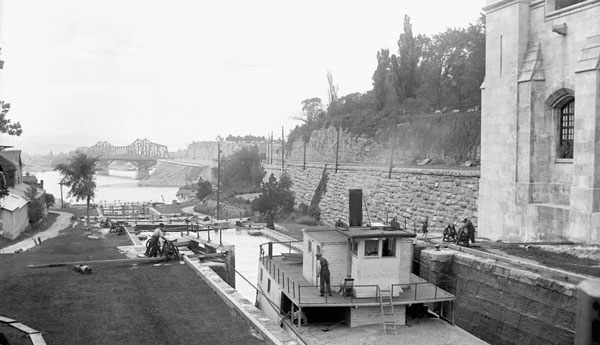Photogrammetry: A valuable 3D tool
Technology is increasingly becoming an effective tool for engineers in many disciplines. One example is photogrammetry, a measurement technique that involves taking overlapping images of an object, structure or area from all angles to create a 3D image. Photogrammetry has recently been adopted to help improve the quality and efficiency of the infrastructure inspection process at Public Services and Procurement Canada (PSPC).

In photogrammetry, after images have been taken, software is used to identify common features between the overlapping images. The software then forms a 3D image, in which the dimensions and features of the structure are shown from every angle.
The Heritage Canals Engineering Works team in the PSPC Ontario Region has been at the forefront of testing this novel application of an existing state-of-the-art technology.
As part of a pilot project, the Ontario Region team used photogrammetry in their regular inspections of historic maritime infrastructure on the Rideau Canal in Ottawa and the Trent-Severn Waterway in Peterborough. The 2 waterways have approximately 220 dams and 90 locks combined. Parks Canada, the organization responsible for these important structures, is undertaking a range of projects to conserve, protect and enhance their heritage value.

As part of the pilot project, a drone was used to take photos of the maritime infrastructure. The drone’s ability to navigate in hard-to-reach areas or to reach areas that were previously inaccessible, such as the inside of a dam spillway, helped reduce health and safety risks while increasing the ability to collect data and imagery.
To carry out this kind of work, the engineers had to be certified drone pilots, with the ability to fly a drone in tight areas, which can involve going around trees and close to structures. "Knowledge of airspace and clearance requirements for advanced drone flights, based on Transport Canada regulations, was critical," specifies David Payne, a Junior Design Engineer at PSPC involved in the project.
Once the photos were gathered, 3D models of the structures were created. These images were used by the PSPC team to help deliver the infrastructure inspection project on behalf of Parks Canada.
A multipurpose technology
In 2023, the Ontario Region team inspected 30 of the Parks Canada dam sites using the 3D technology. Less field work was required because the photos could be studied instead. "The site visit days include visual assessment of dam or lock structures, often combined with drone flights that capture images of the asset for later photogrammetric analysis and the construction of a 3D model," explains Payne.
In addition, writing a report is faster because all of the images are referenced in the 3D model.

This tool can also be used to enhance project management practices. The 3D model can be shared with both the client and contractor to improve team communication, allowing everyone to look at and discuss the images simultaneously. The technology improves site work plans by providing aerial imagery of surrounding areas. As well, photogrammetry makes it easier to monitor a structure’s condition over time, as it creates a photo archive of the structure’s condition on various dates. This is particularly useful in inaccessible areas that only drones can reach.
"We now have a new workflow that has greatly improved our efficiency both during and after site visits. It has allowed us to obtain a more comprehensive understanding of the site and provide a more detailed, thorough inspection report that can be visualized by all users. It facilitates a far more detailed site recording, and increases the speed of report writing and future site reviews," notes Payne.
The inspection of some of Ontario’s key marine infrastructure would have taken much longer and been more challenging to complete without the use of photogrammetry. This innovative technology will undoubtedly improve and fast-track projects of this nature in the future.
Take a look at the Rideau Canal in 3D. For more stories about PSPC people, projects and initiatives, don’t forget to add Our stories to your favourites.